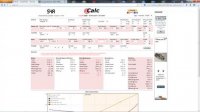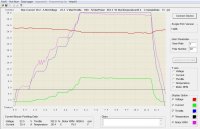I've heard that eCalc is way off when calculating the amp draw vs prop size for pancake motors..can anyone confirm this, and maybe explain why? Id think since it asks for the number of poles, case length, voltage, and max A limit that it couldn't possible mess that calculation up??
I'm wondering because I entered in the specs from my most recent Hex build with 4830 480Kv motors which have a maximum amp limit of 31A and the manufacturer recommended props for it are 14x5-15x5, while some people say they even use 17x5.5 on them......but eCalc is telling me I will pull over 60A at full throttle with 15x5.5's! In order to keep the A below 31 I have to input a prop size of 12x4.5....surely these motors can handle more than that though???? I'm confused!
Attatched a picture from the calc for reference.
ThanksView attachment 12395
I'm wondering because I entered in the specs from my most recent Hex build with 4830 480Kv motors which have a maximum amp limit of 31A and the manufacturer recommended props for it are 14x5-15x5, while some people say they even use 17x5.5 on them......but eCalc is telling me I will pull over 60A at full throttle with 15x5.5's! In order to keep the A below 31 I have to input a prop size of 12x4.5....surely these motors can handle more than that though???? I'm confused!
Attatched a picture from the calc for reference.
ThanksView attachment 12395



